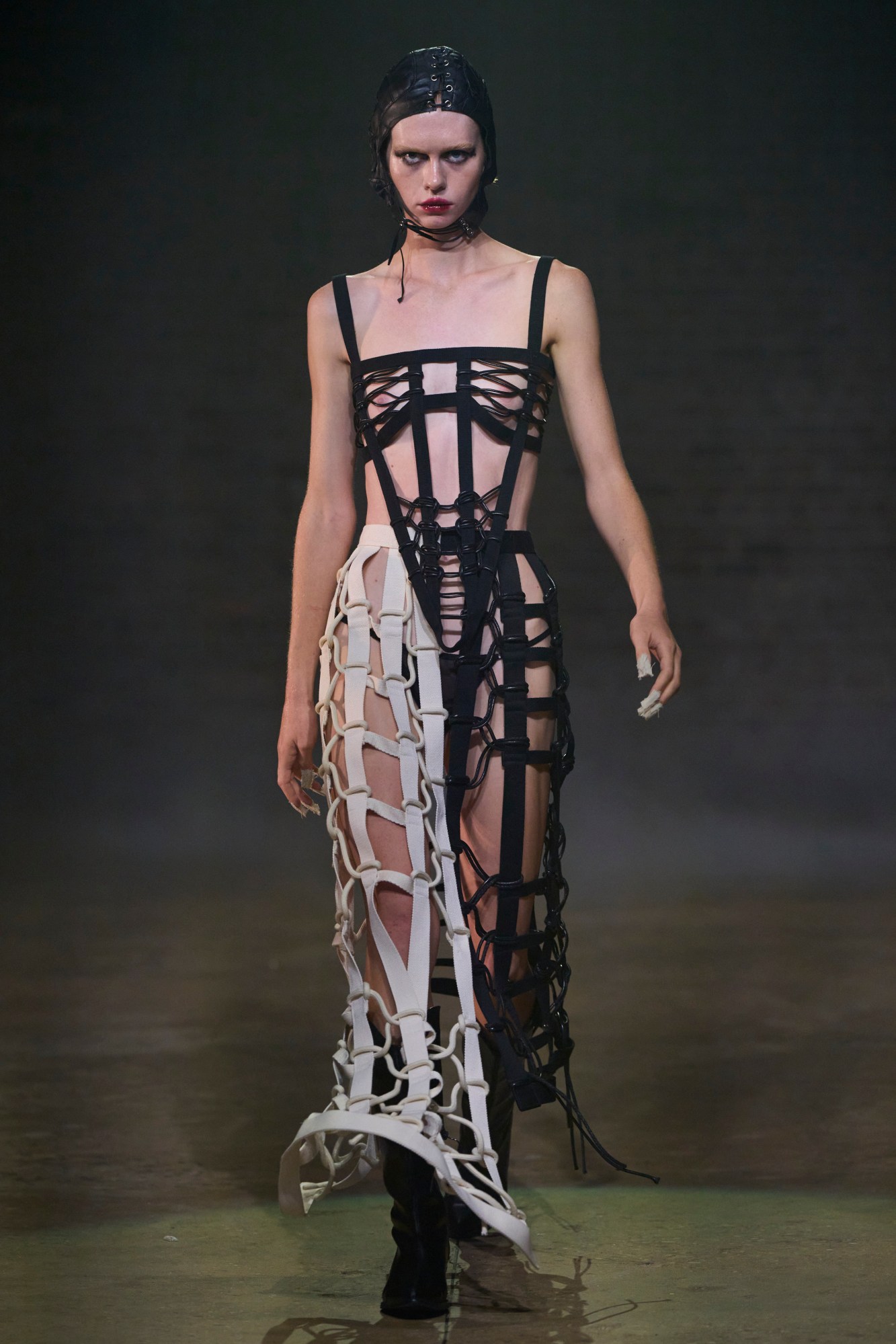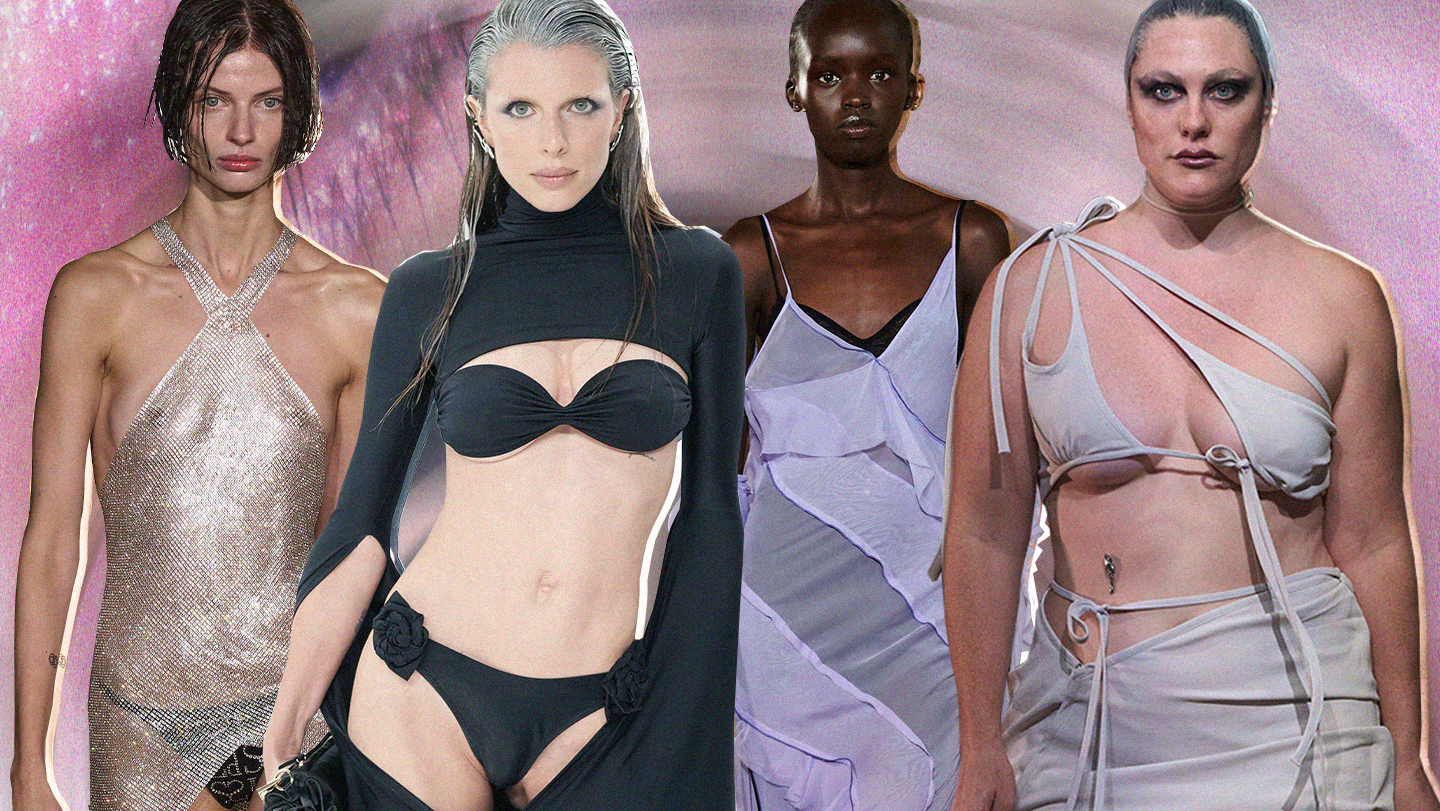While the fashion puritans out there would raise an eyebrow if you left the house with your hair half-done, the zip on your dress all the way down and your arm through just one of its armholes; there’s something to be said for dressing as you’d decided to give up halfway — as if you’d caught yourself in the mirror in a state of semi-dress, and figured that a neither-here-nor-there flex was in fact chicer than the all-done-up look you were originally heading for.
Looking at the recent SS23 shows, though, it seems like this haphazard approach to dressing is gaining traction, with a bevy of womenswear designers proudly vouching for a radically reckless look. Indeed, from Prada to Victoria Beckham, Elena Velez to Ludovic de Saint Sernin, designers indulged in the quietly subversive delight of intentional dishevelment – getting dressed up to look almost undressed. Strategic slashes, underwear-as-outerwear, scrims of diaphanous fabrics that, paradoxically, both cover and reveal abounded. It’s a look that’s gained traction on red carpets, too, perhaps most notable with Julia Fox’s recent appearance at the CFDA Awards, sporting a svelte black cut-out gown that was, well, more cut-out than gown.
Seen in times like those we currently inhabit, the provocative spirit of these looks naturally prompts questions: are they to be read as a celebration of carefree moments spent alone; a way of taking the bedroom ritual of dressing out into the real world? An exhibition of vulnerability, and a way to transfigure that into strength, especially at a time when women’s fundamental rights face significant threats from governments around the world? A rebellious vindication of a woman’s right to buck expectations of propriety? Or a confrontation with questions of preparedness, asking us to reflect on just how ready we are for whatever lies ahead?
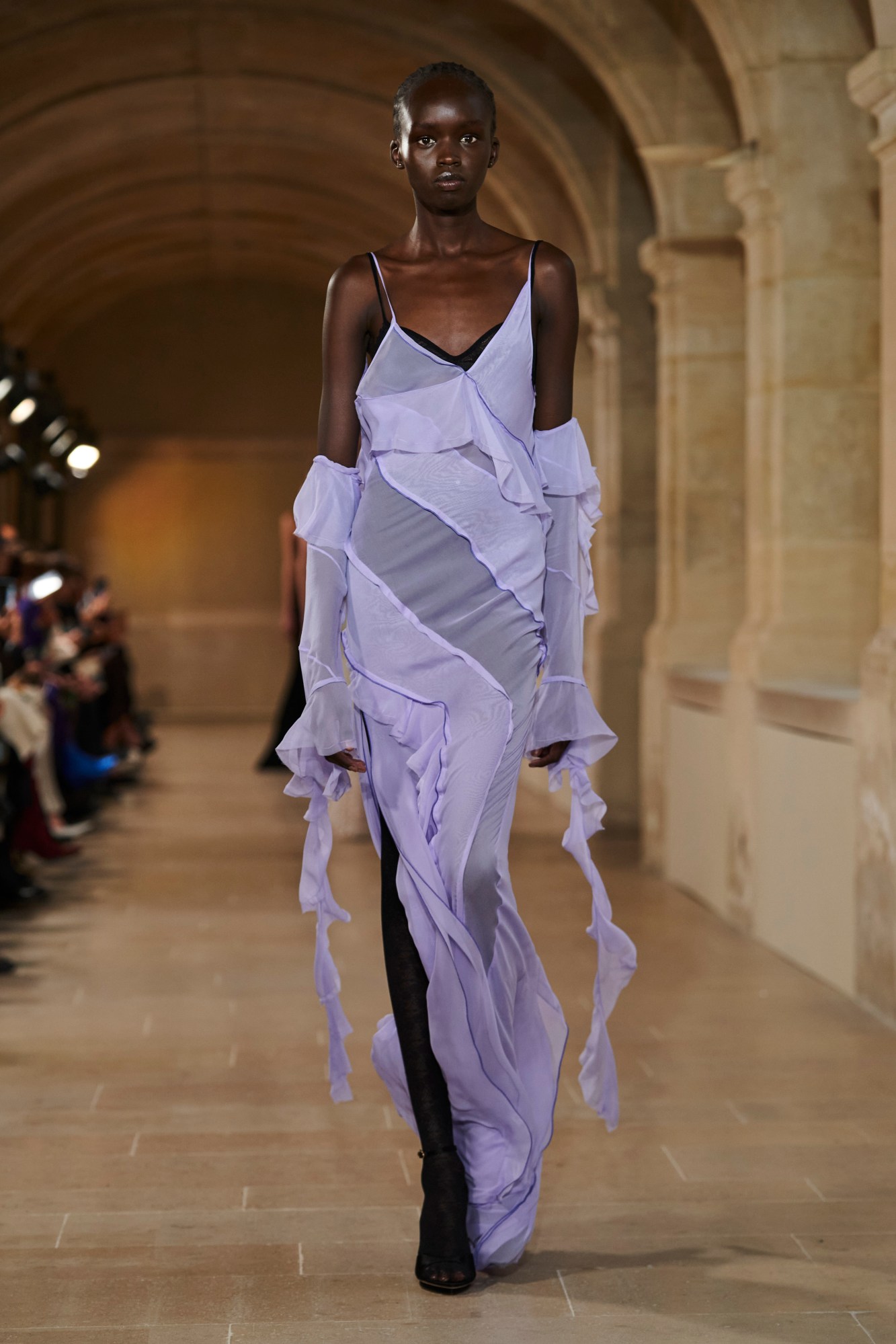
At Victoria Beckham, models were elegantly dishevelled. Dresses were seemingly composed of ribbons, wrapped around the body and haphazardly sewn together, with trails of fabric gently tumbling down the silhouette. There was a curious, liminal quality to these looks. While they captured the transient chaos of getting dressed, they were styled with accessories that suggested a sense of sleek orderliness: hybrid fishnet stockings/high heels that matched the skin tone of each model. Exposed bras — intimate, yet obviously intentional — evoked a poignant insouciance. Here, perfection was found in resigning oneself to simply being in the moment, rather than aspiring toward the next.
That was a quality that made itself felt at Coperni, whose asymmetrical dresses were composed of vertical strips that sensually lashed and trailed about, evoking a concerted carelessness. Front-plunging low-rise skirts were adapted from oxford button-downs, as if tied casually around the waist. Romantic nylon camisoles were stretched and pinned diagonally on the body, eliciting an armour-like quality that suggested protection of the body rather than its presentation. At Cecilie Bahnsen, the Copenhagen-based designer’s usual floral frills were sullied, with twee babydoll dresses layered over thin, shimmery, gauzy t-shirts, revealed by the fact that dresses dangled off the shoulder with devil-may-care indiscretion.
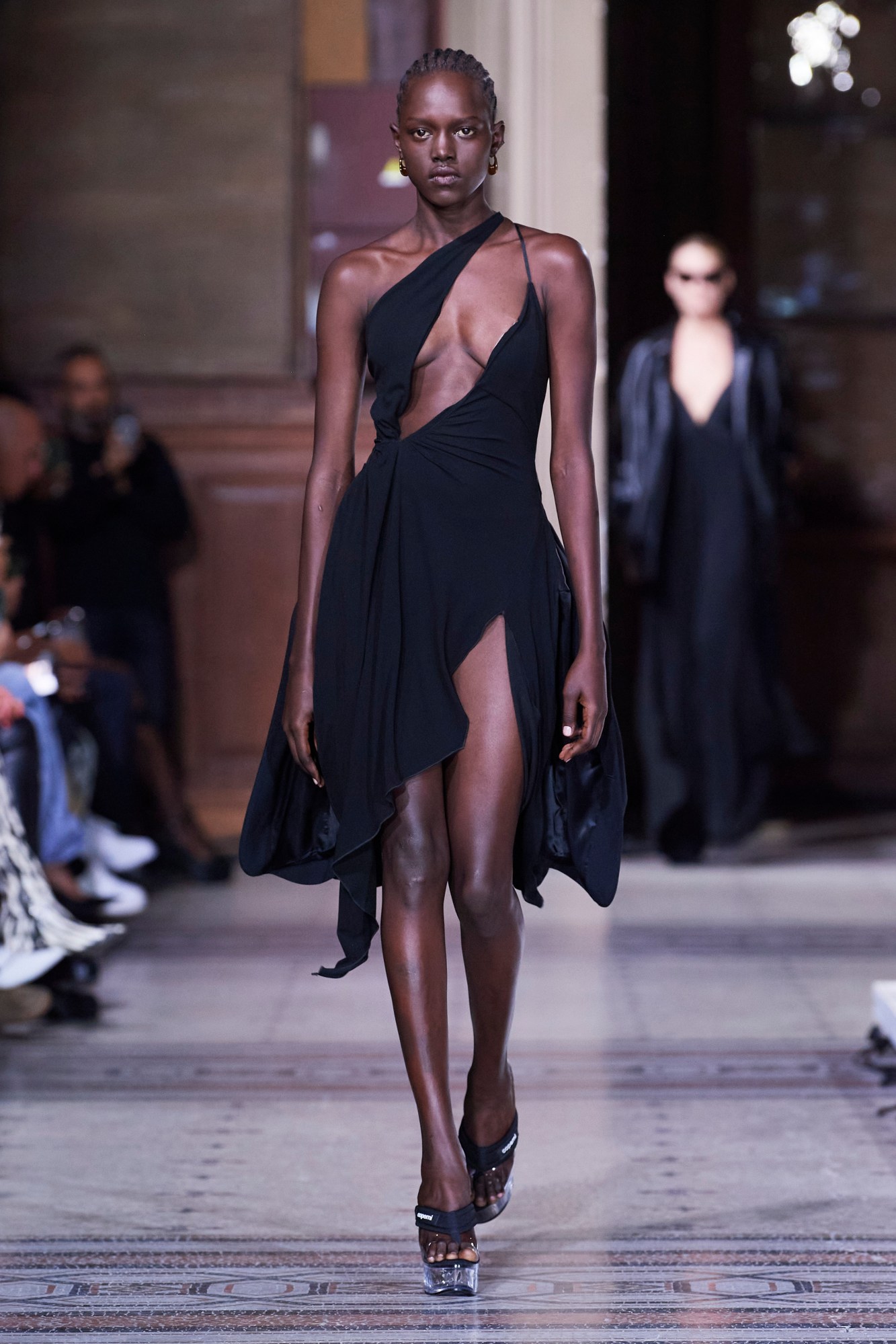
This allure permeated Miu Miu’s offering for the season, in particular the bunched-up, sheer, layered lurex-y pieces. At Ludovic de Saint Sernin meanwhile, a sense of vulnerability was conjured by babydoll dresses with dramatic slashes down the side seams — as the models walked, the silhouette gently puffed to reveal skimpy leather briefs beneath, often worn with ruffled belts that doubled as micro-mini skirts.
While these designers seemed to deal with the more sensual and romantic facets of the trend, Prada took the vulnerability at its heart and tinged it with a dark eeriness. Thin, sheer knitted tops and skirts with raw-edge hems exposed simple black briefs underneath, seemingly nodding to a cosy WFH look while debriding the pieces of their concealing function. Elsewhere, dry, papery silks were wrapped into tube dresses with subtly frumpy bubble hems, as well as into printed shift dresses with tears up the hem, turning a narrative of empowered vulnerability into one suggesting a more sinister fragility.
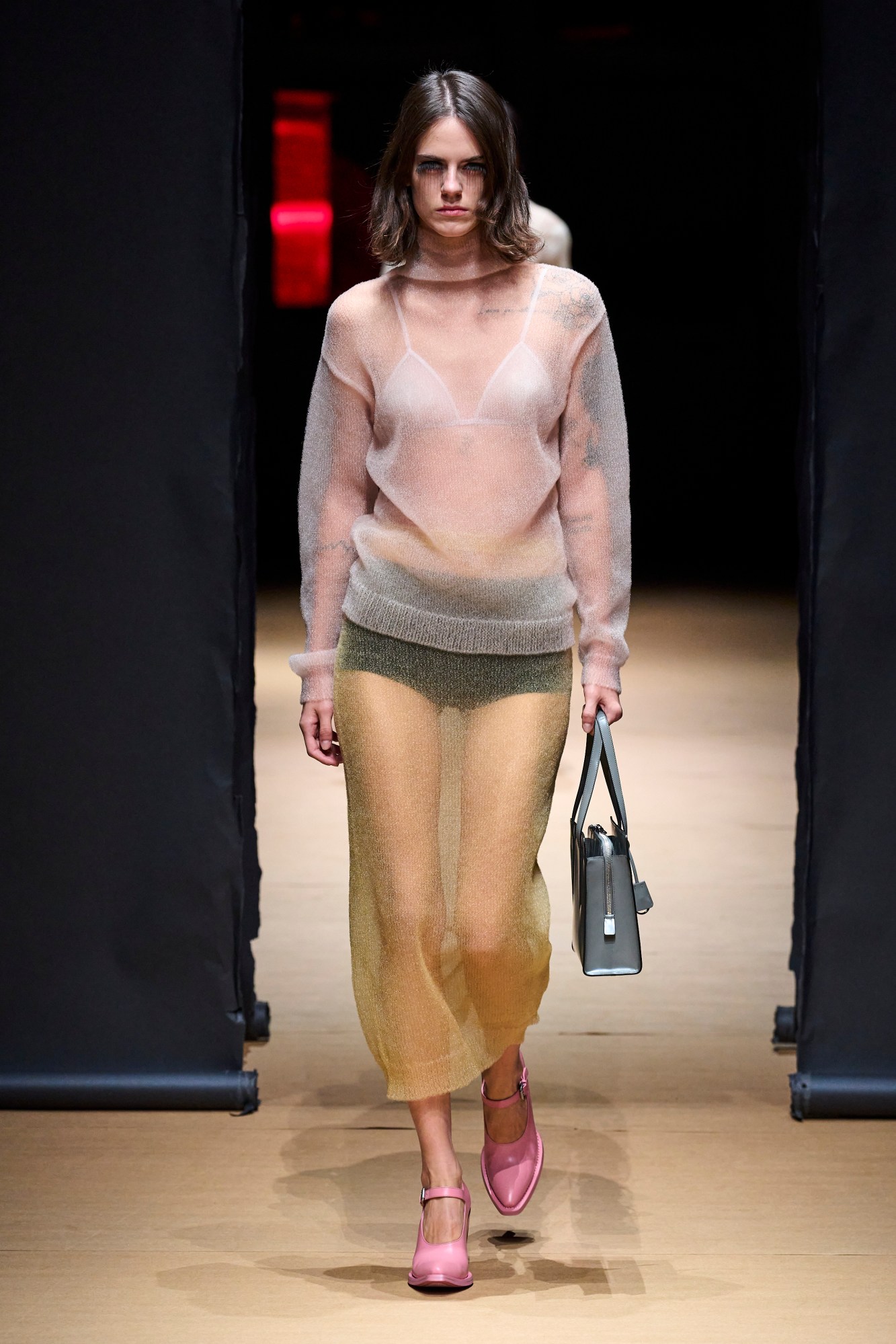
Elena Velez also leant into a grittier energy, though there was something hardy, almost warrior-like, in the act of baring it all. Models stormed the runway in heels caked with mud sporting bustiers crafted from raw linens and cotton; elsewhere bandage-like straps and elastic cords were webbed into scanty gowns. Scraps of linen became press-on nails, and soot-covered bodies had daggers in their naked backs, striding strong through the pain.
Whether by way of sheer fabrics, straps, or cutouts, there’s a clear fascination with the human body on display. Rather than the more simplistic, post-pandemic sexiness of SS22, however, what we’re seeing here seems to allude to a more nuanced relationship with our own bodies. On the one hand, there’s a self-inflected intimacy at play — a sense of dressing like one would in the comfort of one’s own bedroom, and having the confidence to take that out into the world. On the other, many of the collections we’ve seen have conveyed a brooding vulnerability, one that poignantly resonates with a global sociopolitical climate in which women’s rights — particularly their right to make basic personal decisions about their own bodies — are increasingly under grave threat. Granted, not all of the looks we’ve seen on the runways this season will directly translate to pieces we’ll see in the streets next summer, but the point is less about their practicality and more about the potency of their message: whether dressed half up or dressed half down, there’s an empowered sense of intention to the trend; of dressing for yourself, on your own terms.
